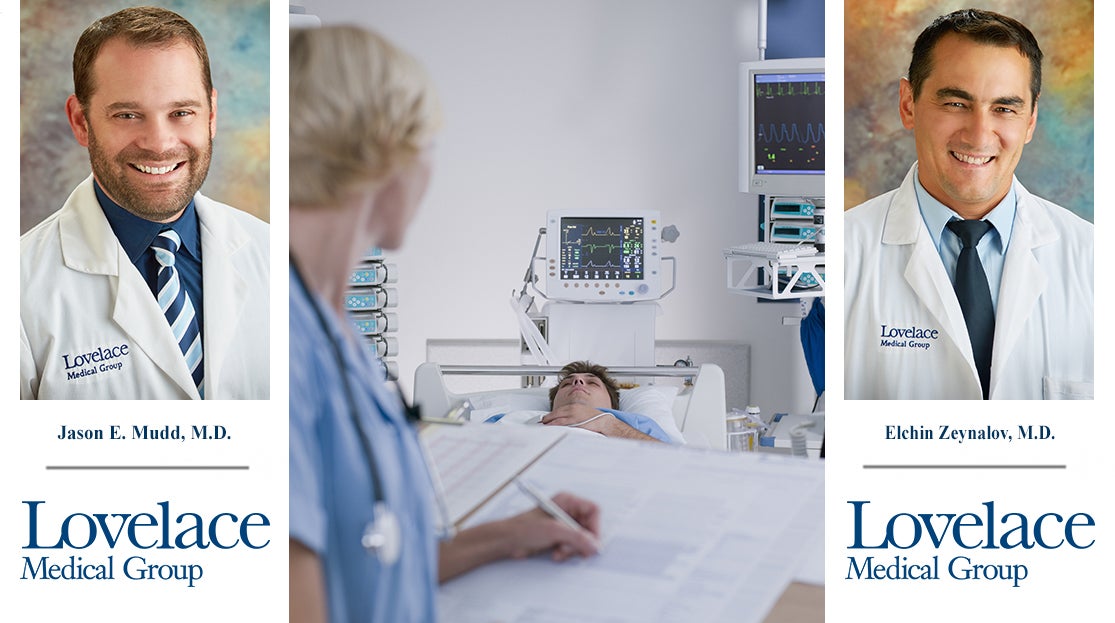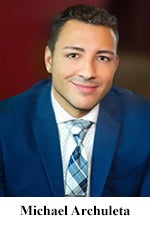
For Michael Archuleta, getting a good night’s sleep had been a hard thing to do for many years.
A nurse practitioner with a health insurance company, the 44-year-old Albuquerque resident started developing sleep issues in his 30s.
“I was just tired all the time,” said Michael. “It got to the point where I’d be talking to people and then I would suddenly doze off. Sometimes while I was driving, I would stop at a traffic light. If it lasted long enough, I would start to fall asleep in the car!”
Sleep apnea
His doctor diagnosed Michael with sleep apnea – a serious sleeping disorder that causes breathing to stop intermittently. “I’ve been told that I don’t snore, but sometimes I stop breathing for 10 to 15 seconds during the night,” he said.
While there are three main kinds of sleep apnea, the most common kind is obstructive sleep apnea, which occurs when the tongue and/or throat muscles relax and block the flow of air to the lungs.
In addition to loud snoring, sleep apnea has many possible side effects that can be quite serious, such as:
- Being more prone to accidents
- Difficulty concentrating during the day
- Mood changes, such as depression or irritability
- Increased risk for:
- High blood pressure
- Heart problems
- Type 2 diabetes
- Liver problems

In Michael’s case, he was diagnosed with obstructive sleep apnea, as his tongue often blocked his airway while he slept. His doctor first prescribed additional oxygen at night. Then Michael tried a CPAP (Continuous Positive Airway Pressure) device, which uses mild air pressure to keep breathing airways open while sleeping.
“I used the CPAP device for almost five years,” Michael said, “but I didn’t have much success with it. I never got used to it and would only wear it for a few hours. It never felt very comfortable.”
Then one night while watching TV, Michael saw a commercial for Inspire™, an alternative treatment for people with sleep apnea. His partner, who worked at Lovelace Medical Center, told him that they offer the Inspire service, so Michael did some research and contacted the Lovelace Sleep Center.
Quiz and sleep study
Michael took Lovelace’s Sleep Quiz. “It’s an eight-question quiz that gives the Sleep Center a way to measure your quality of sleep,” said Michael. “Since you get a numeric result after the quiz, you can repeat it later to see if your sleep is getting better or worse.”
Since Michael had taken a sleep study more than five years ago, his doctor wanted him to repeat the test to get updated results.
How a sleep study works
Patients arrive at the Lovelace Westside Hospital Sleep Center in the evening and stay in a private bedroom with a full-size Sleep Number bed, hotel-quality linens, and a TV. The environment is relaxed and includes all of the comforts of home.
Throughout the night, a sleep specialist monitors sleep patterns, brain waves, eye movements, breathing, oxygen levels, heart rate, and muscle activity. Although it may seem difficult to sleep with sensors attached, most people fall asleep easily in a comfortable environment. Results from the study can be gathered even if the patient does not get a full night’s sleep.
Michael found the staff at the Sleep Center very helpful and knowledgeable. “They were very nice and always in contact with me, telling me what the next steps would be,” he said.
“My situation was more complicated because my tonsils were also obstructing my airway. Dr. Elchin Zeynalov, the sleep medicine specialist at the Sleep Center, recommended that I have my tonsils taken out since they would improve the airflow to my lungs. So, even though they rarely recommend a tonsillectomy for adults because it can be painful, I agreed to the surgery because it would provide the best results for my sleep apnea.”
InspireTM – Sleep apnea innovation
Four months after recovering from the tonsillectomy, Michael returned to Lovelace Medical Center for the installation of the Inspire implant.
During the surgery, Dr. Jason Mudd made two small incisions to place the implant under the skin. One incision was under the chin, while the other one was below the collarbone to connect the device to the nerves in his tongue. Michael returned home the same day.
The next month, Michael returned to the Sleep Center to enable the device and adjust the settings to his needs. Once it was turned on, Michael began a new routine that has helped him sleep soundly again.
“When I go to bed, I grab the monitor, which is no bigger than a cell phone, and hold it over my chest,” explained Michael. “I press the button and it sends a message to the implant to turn on. The implant learns my breathing patterns, so every time I take a deep breath, the implant sends an electrical impulse to my tongue and causes it to move. This keeps my tongue from blocking the airflow to my lungs. So, I am able to sleep longer and deeper than I have for many years.”
Michael said that he feels the electrical impulse when it happens, but it’s not painful. “It’s just a sensation you have to get used to.”
The monitor can also control the implant if you have to get up in the middle of the night. “We have pets and sometimes I have to get up with them,” he said. “I hold the monitor over my chest. It pauses the implant for 15 minutes so I can do what I need to do.”
The Inspire device travels easily and connects via Bluetooth to an app to track hours slept, the number of times the implant was engaged and other data. This information can then be readily shared with a healthcare provider.
Michael is now sleeping better ever since he started using Inspire three months ago.
“When you have sleep apnea, you often don’t dream because you rarely reach REM (rapid eye movement) sleep, the deepest level of sleep where your brain dreams.”
“It sure feels good to dream again,” he said.
For more information about Inspire and the Lovelace Sleep Center, visit our website.
If you want to take the STOP-BANG Sleep Questionnaire and keep a record of your answers, download and print the Questionnaire.
You may also want to see where you land on the Epworth Sleepiness Scale (ESS), so download and print the ESS.




